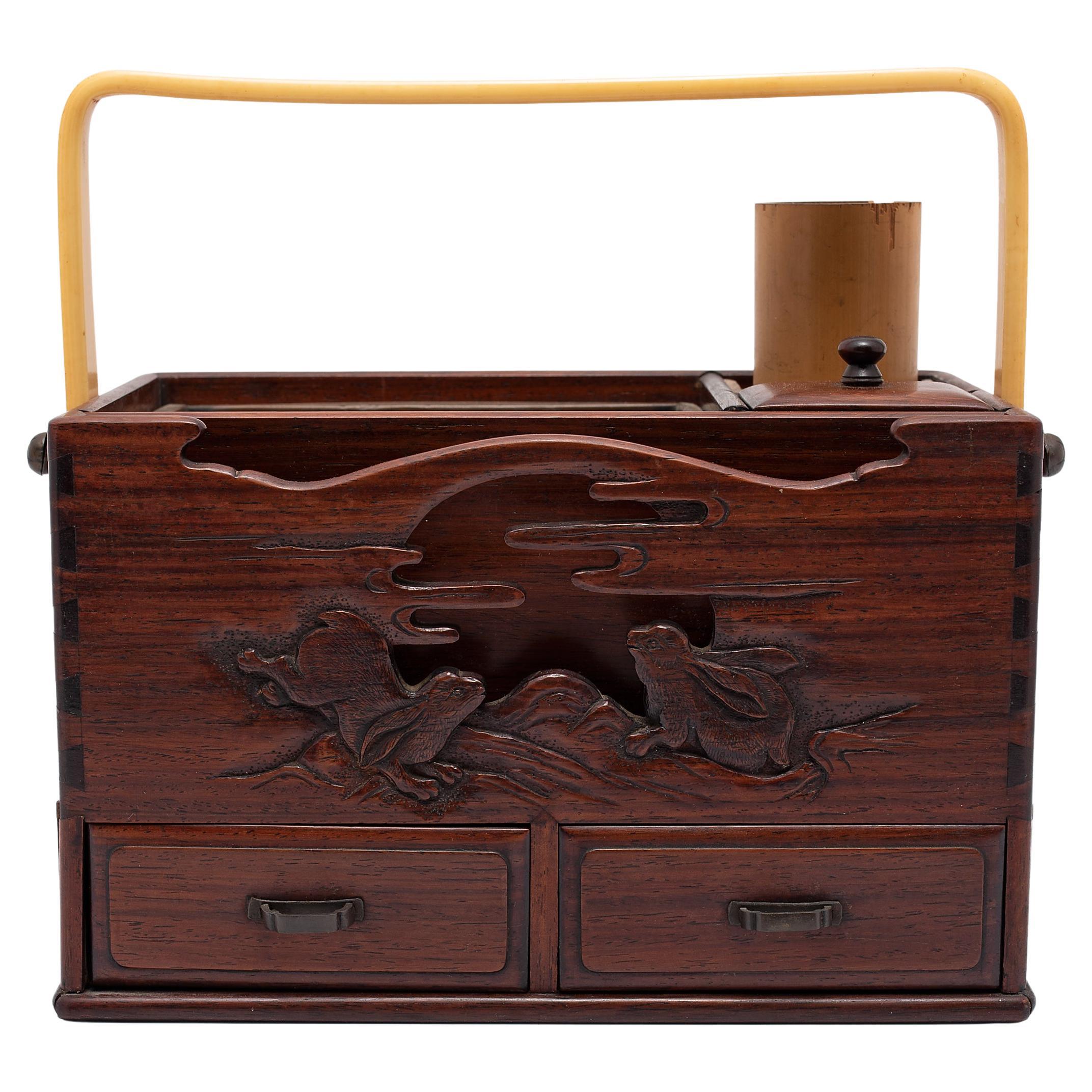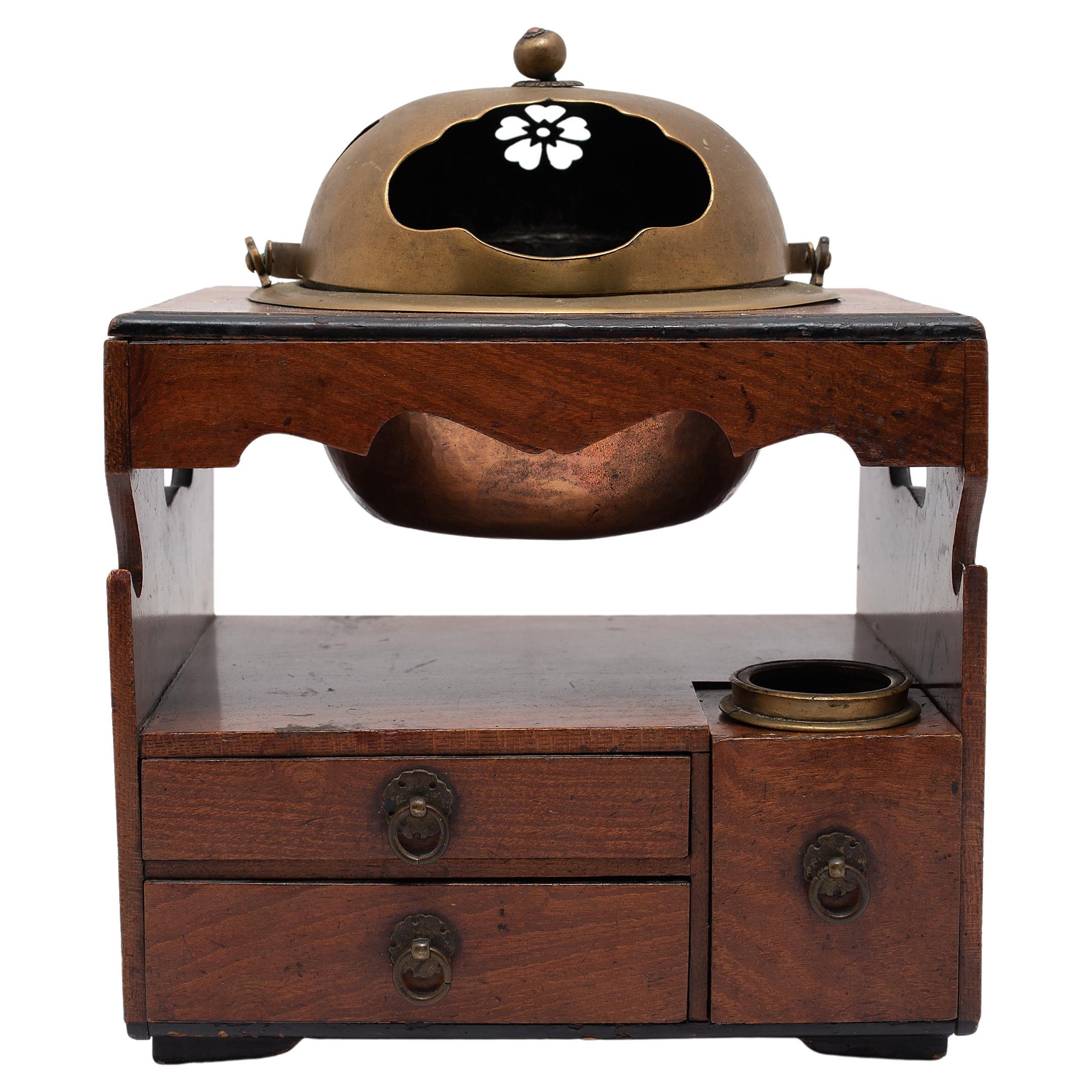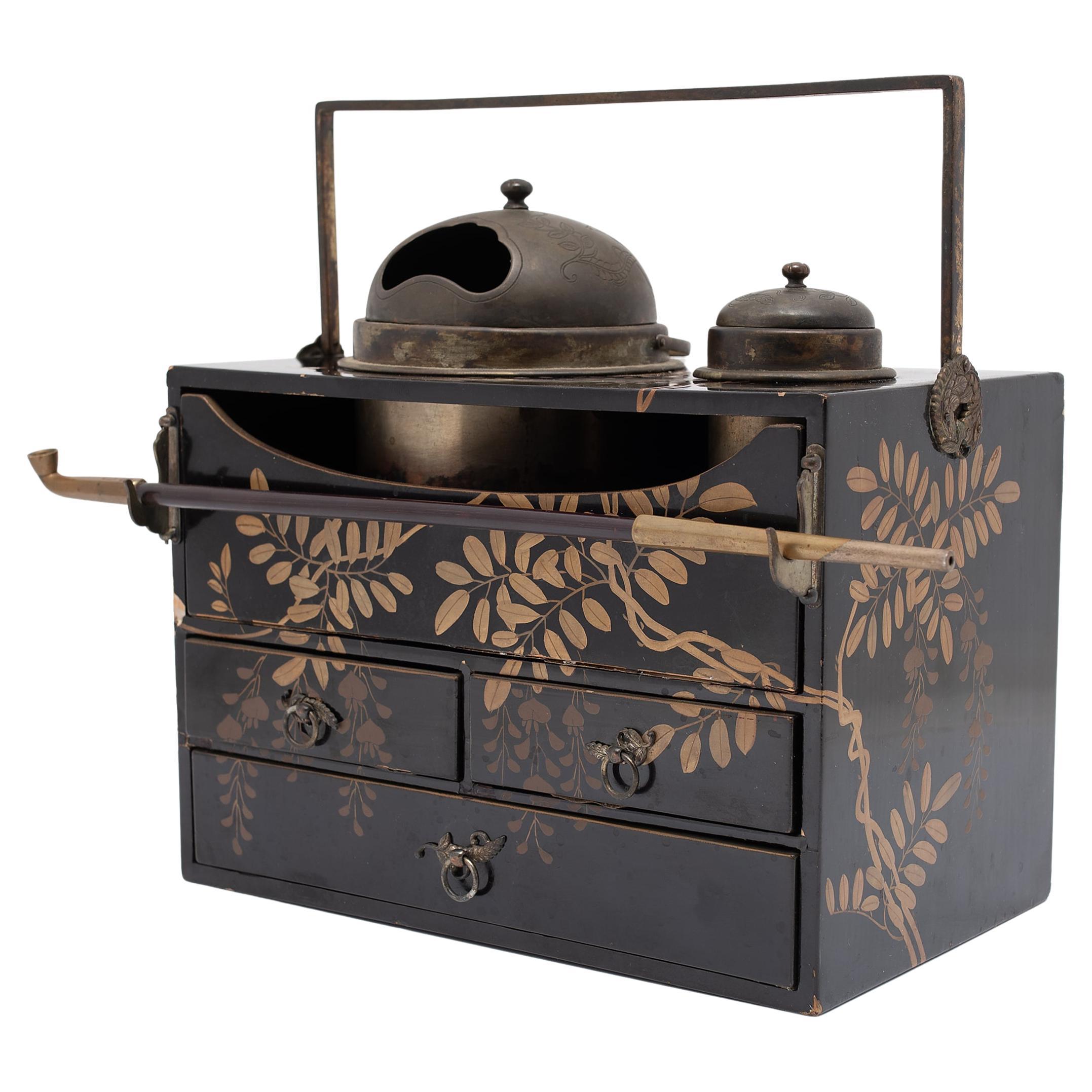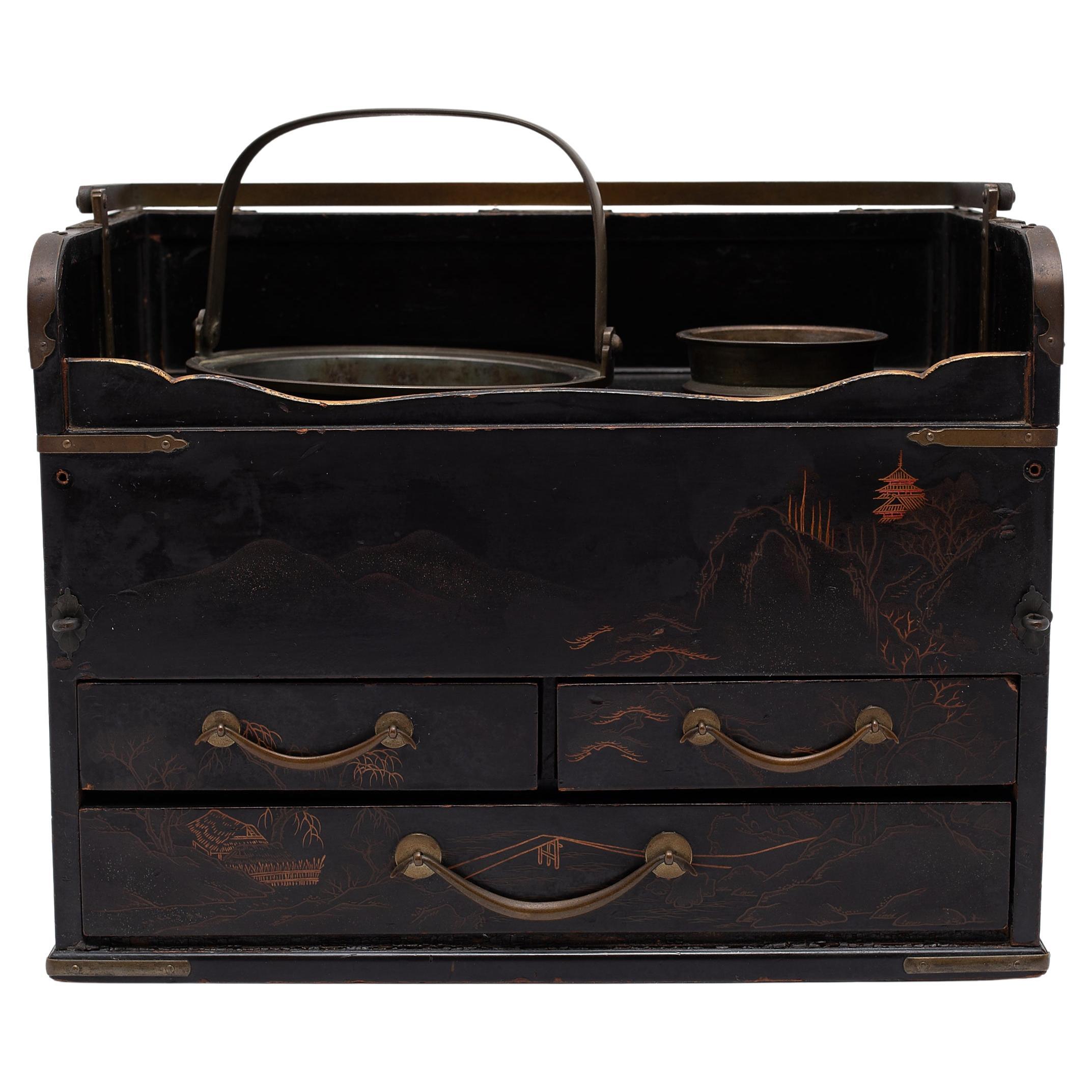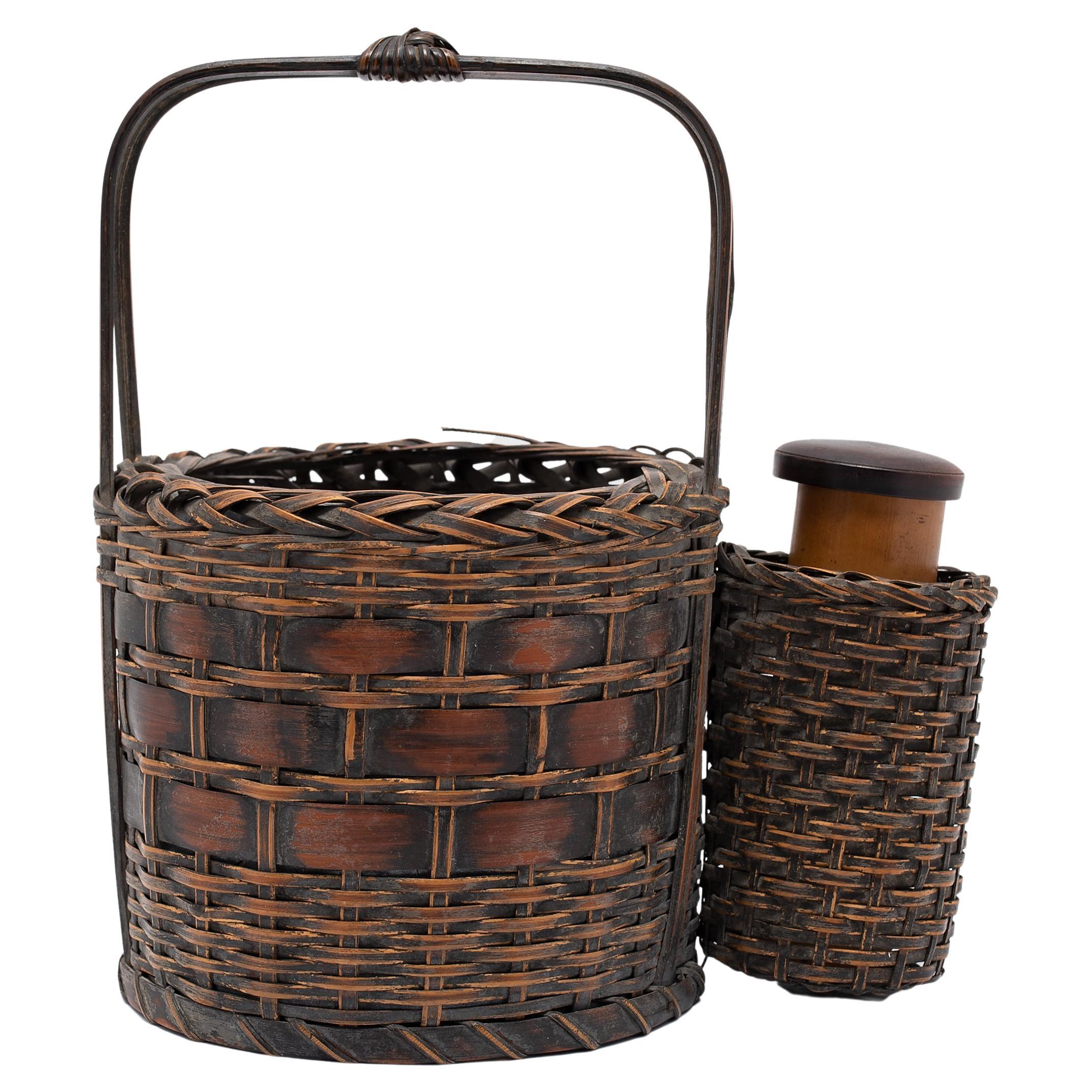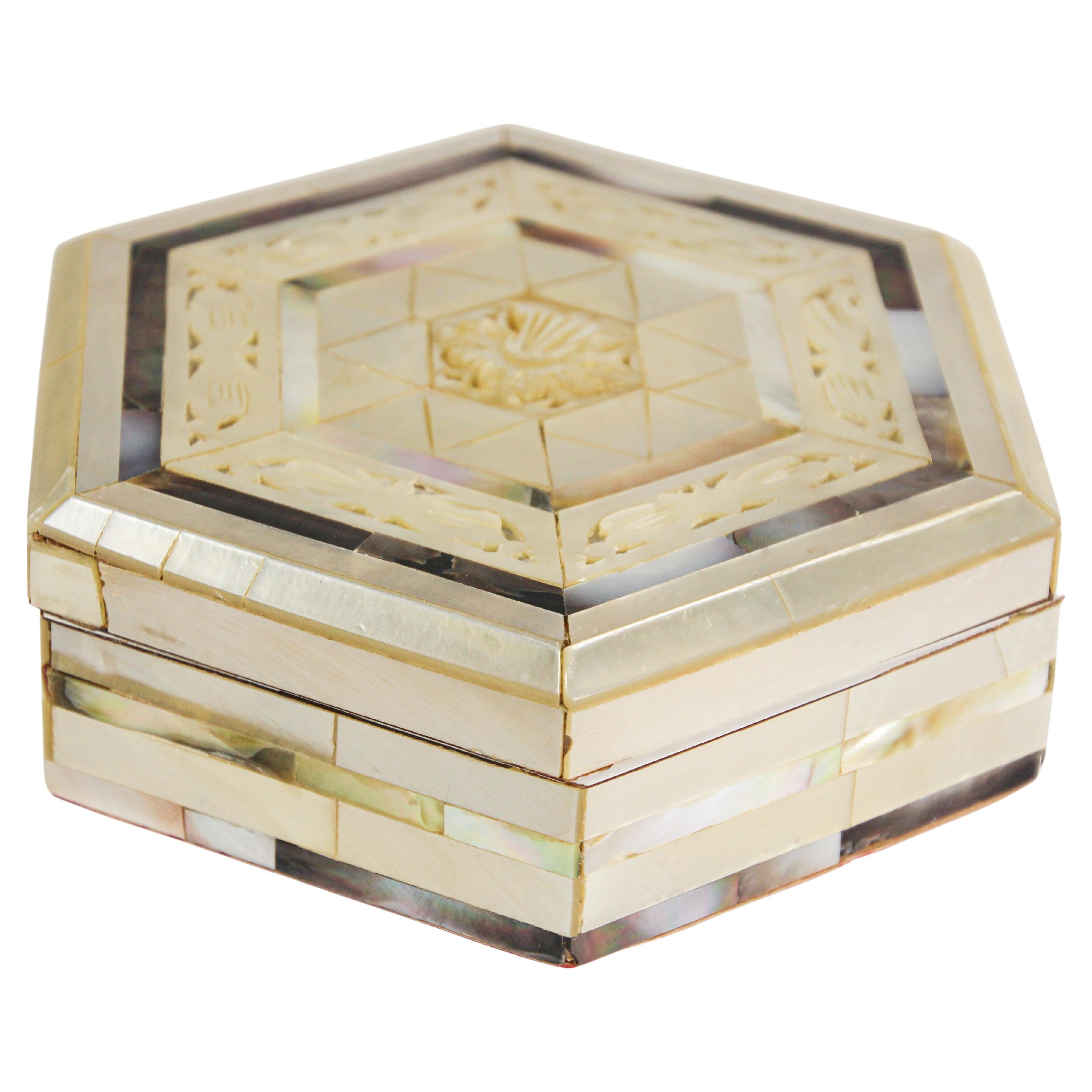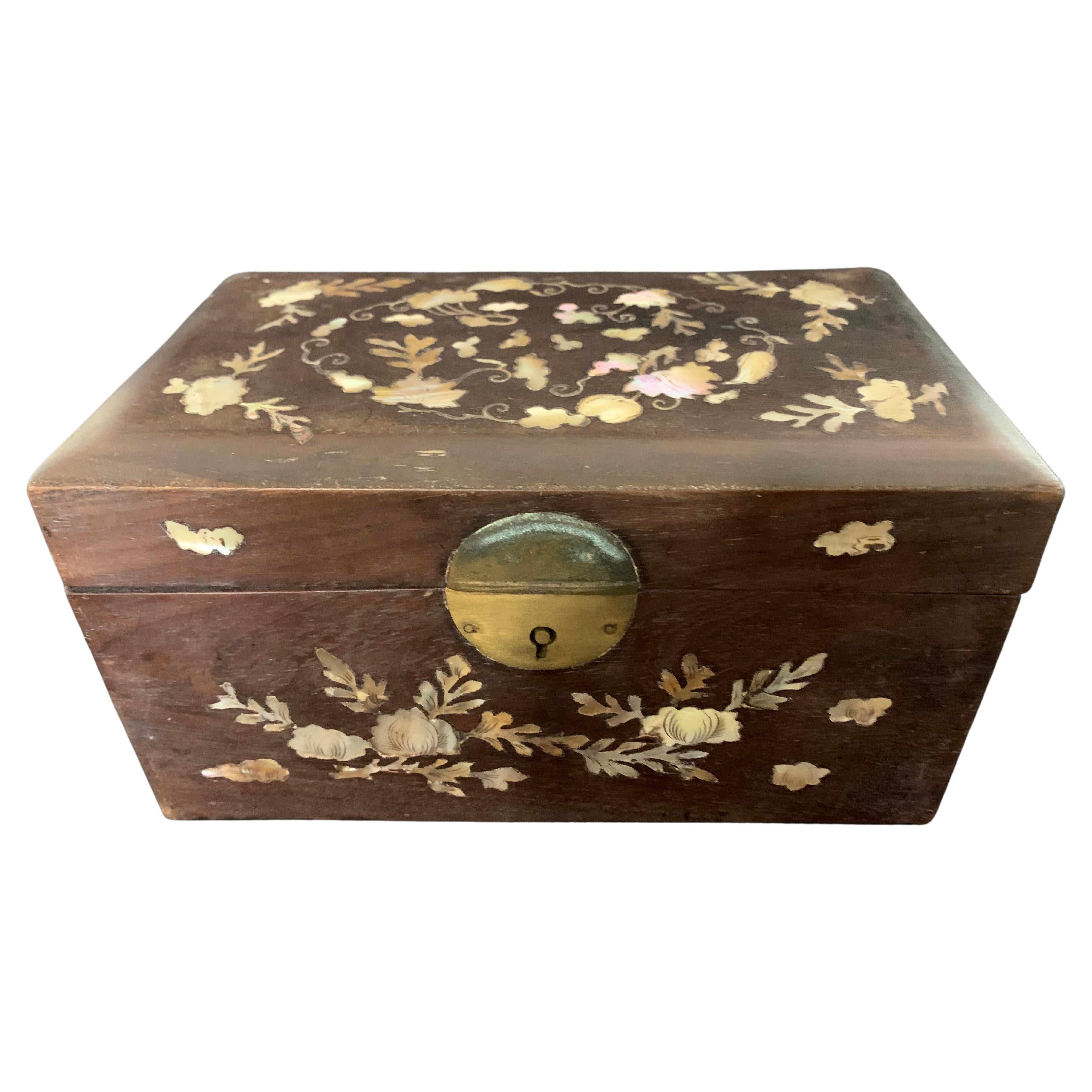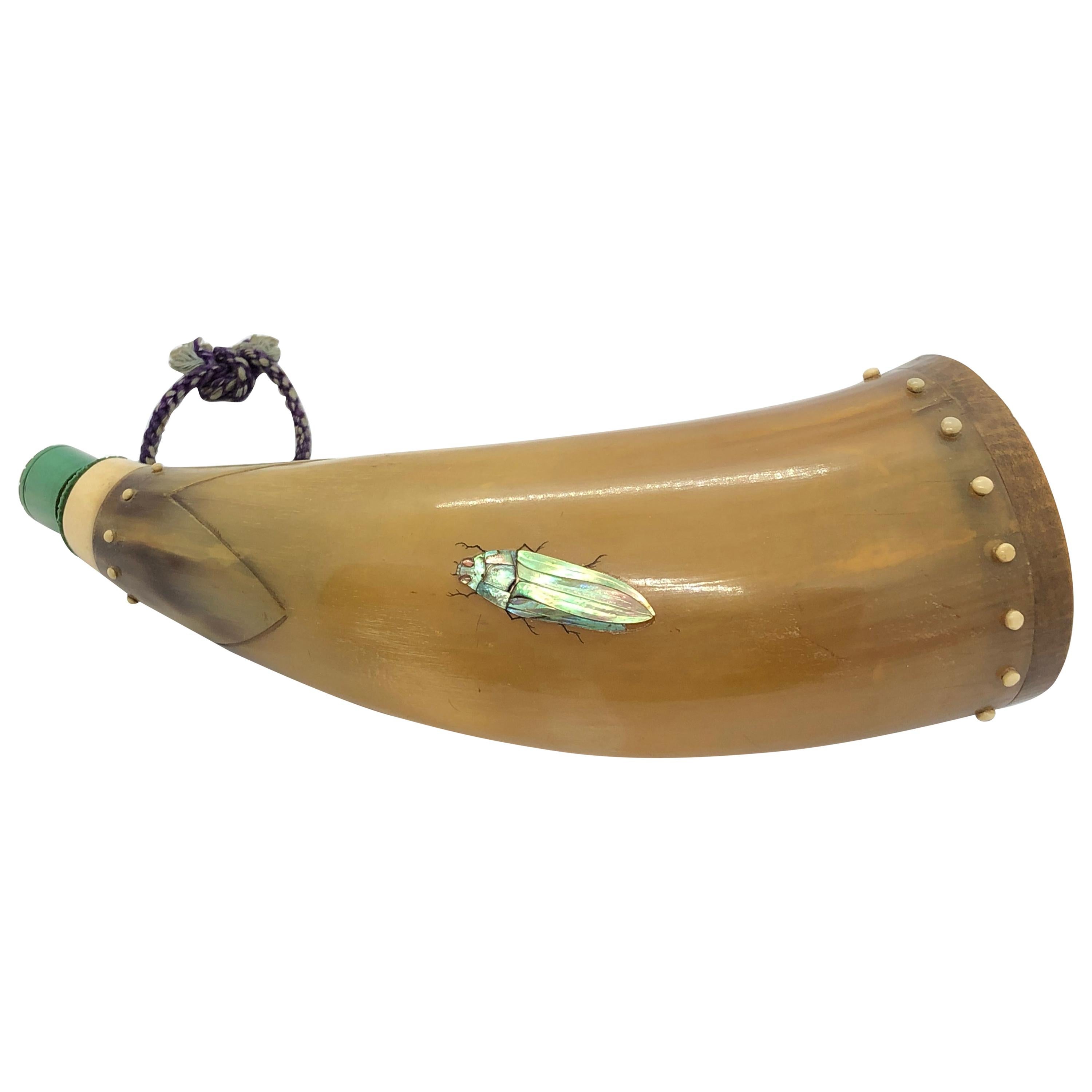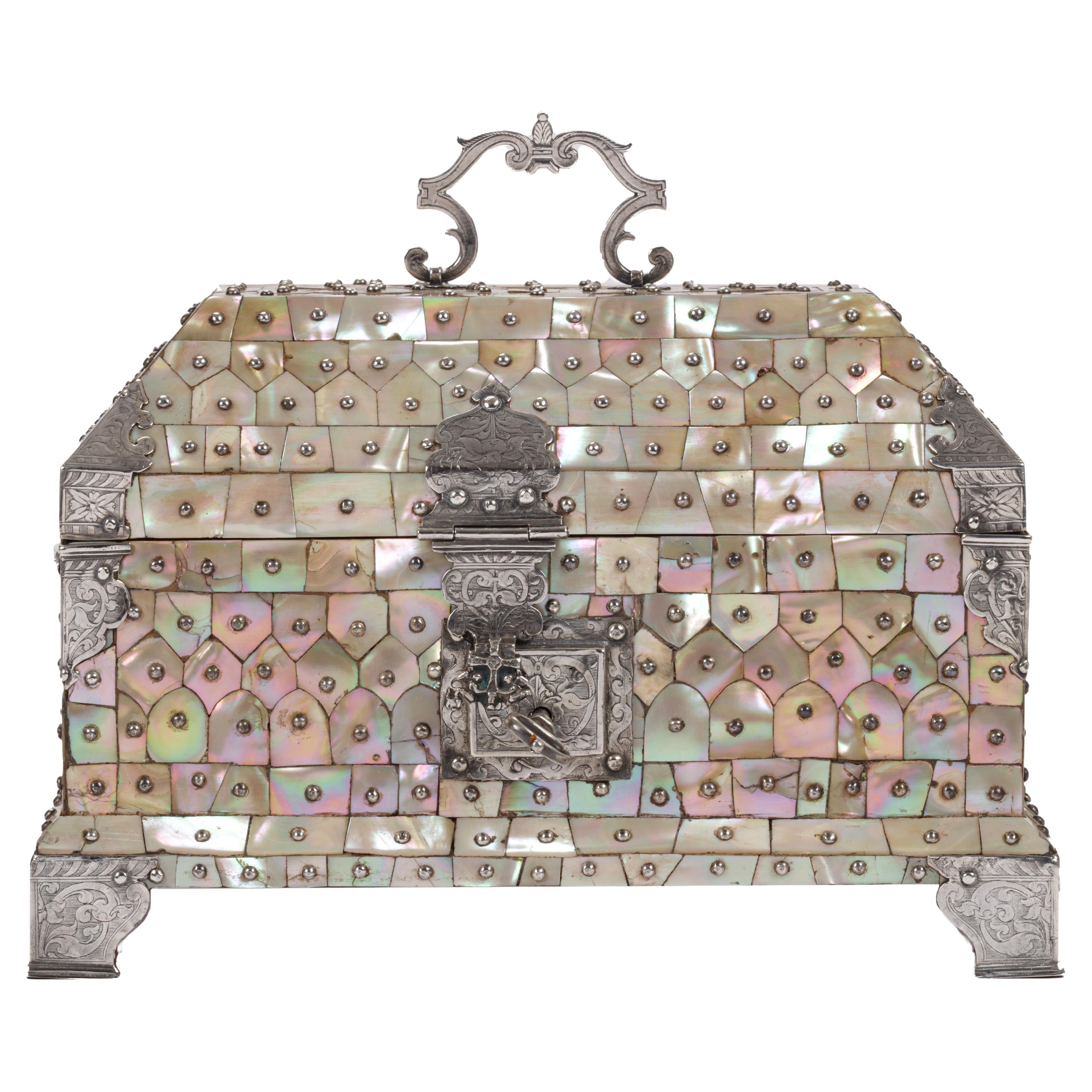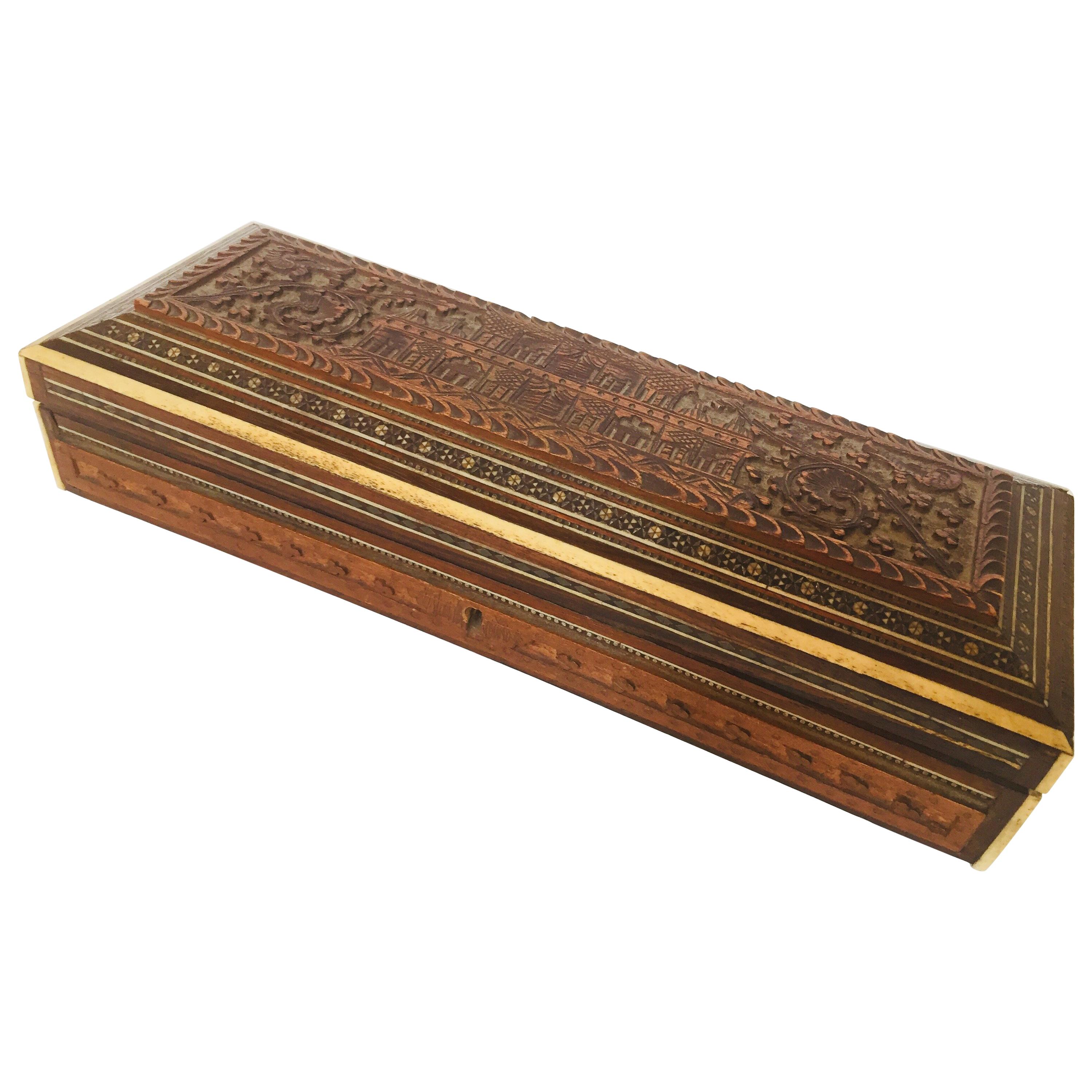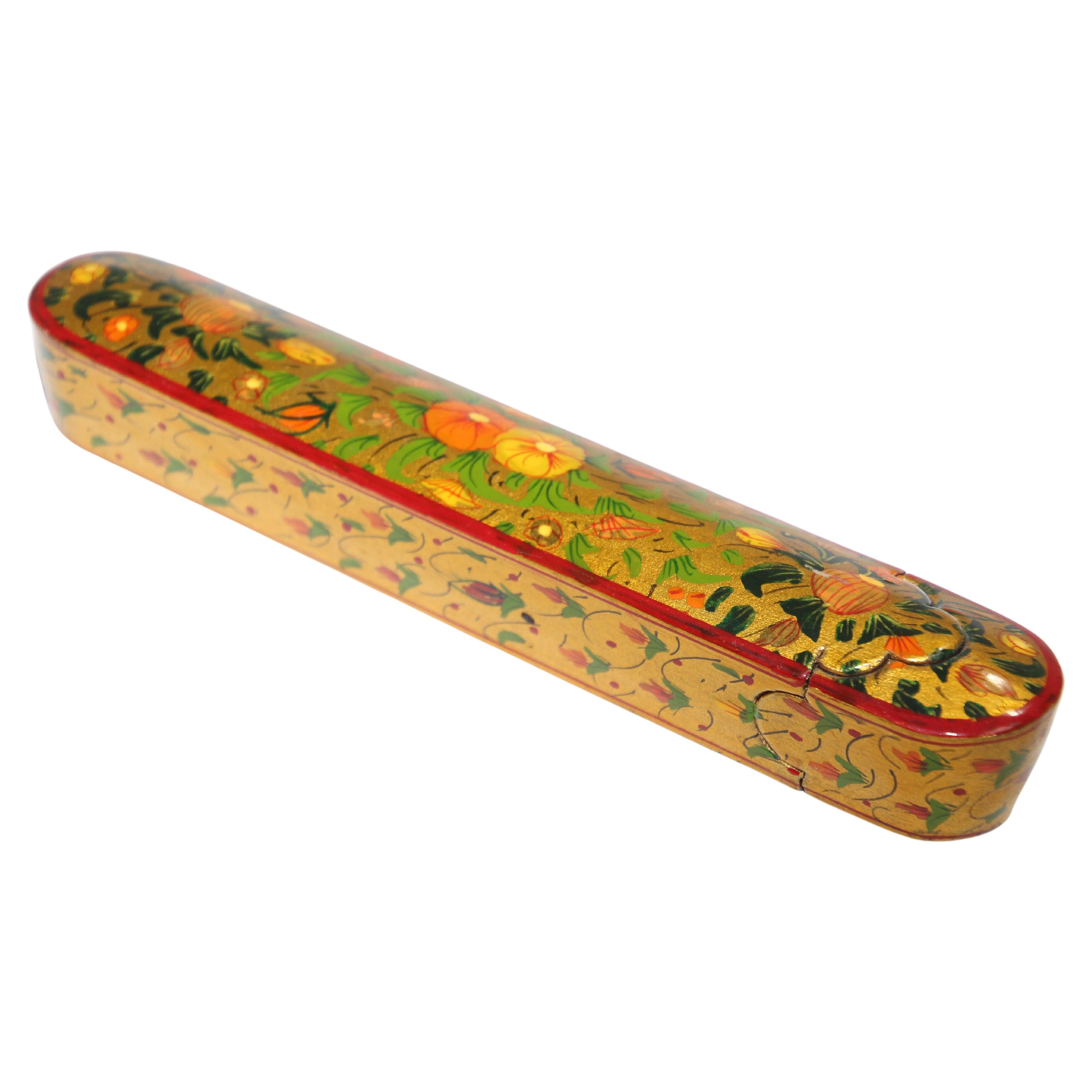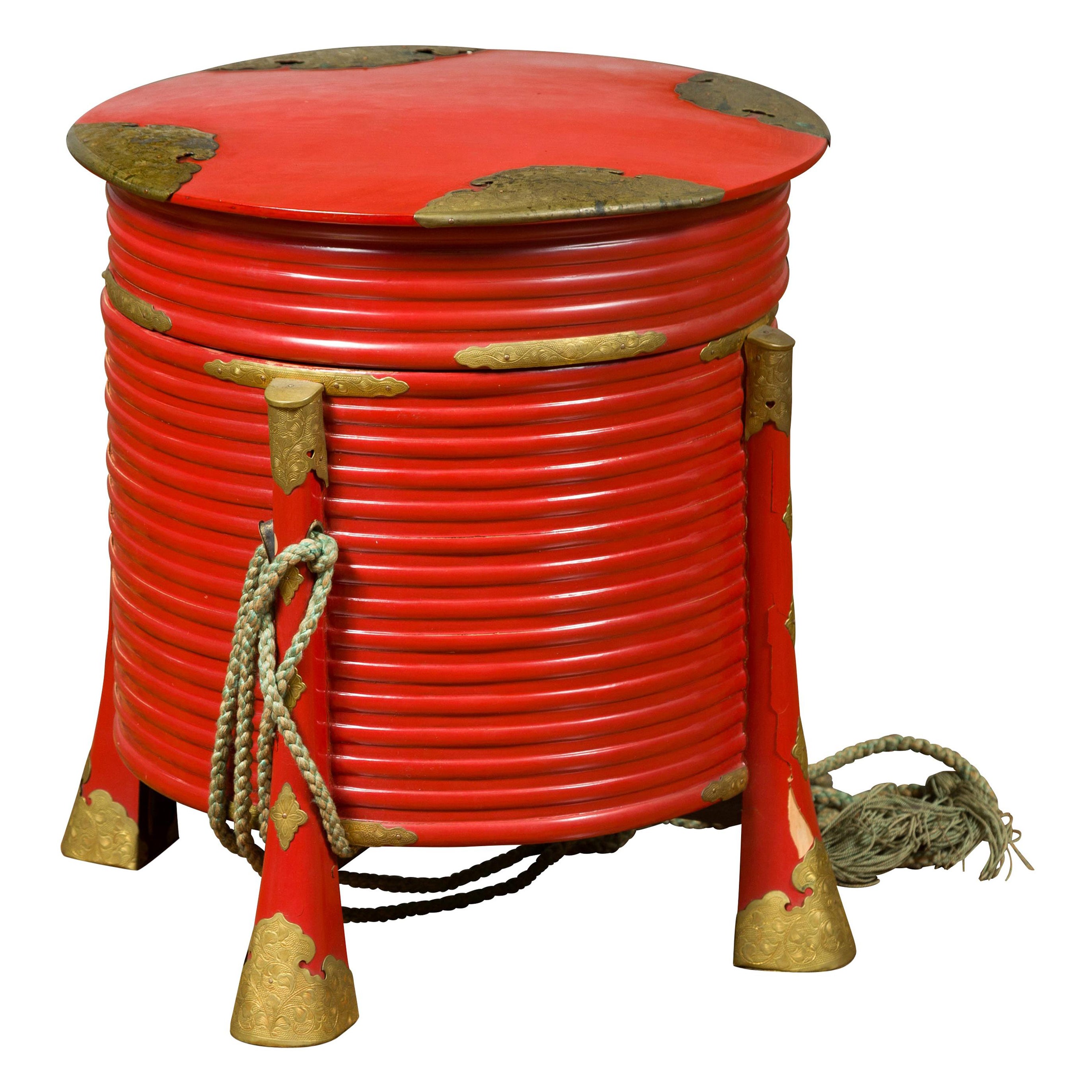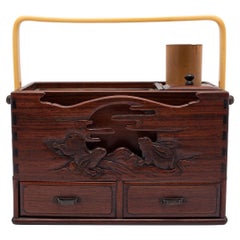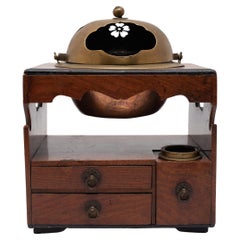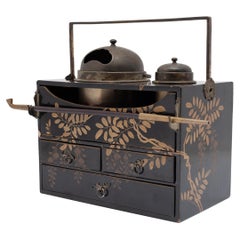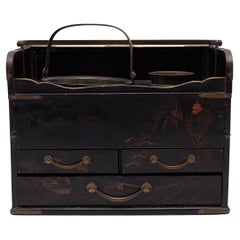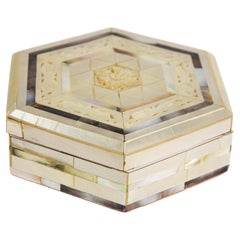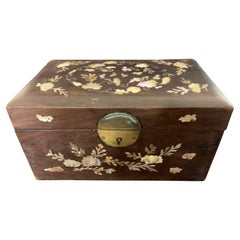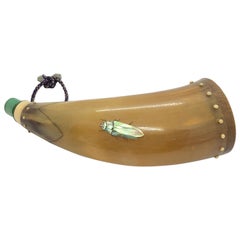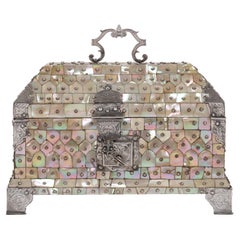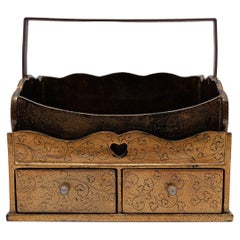
Japanese Gilt Tabako-Bon with Mother-of-Pearl Inlay
View Similar Items
Want more images or videos?
Request additional images or videos from the seller
1 of 6
Japanese Gilt Tabako-Bon with Mother-of-Pearl Inlay
About the Item
- Dimensions:Height: 8 in (20.32 cm)Width: 8.75 in (22.23 cm)Depth: 6.25 in (15.88 cm)
- Materials and Techniques:
- Place of Origin:
- Period:
- Date of Manufacture:Mid-20th Century
- Condition:
- Seller Location:Chicago, IL
- Reference Number:Seller: CANT0091stDibs: LU820028371862
About the Seller
5.0
Platinum Seller
Premium sellers with a 4.7+ rating and 24-hour response times
Established in 1997
1stDibs seller since 2006
1,657 sales on 1stDibs
Typical response time: 1 hour
Authenticity Guarantee
In the unlikely event there’s an issue with an item’s authenticity, contact us within 1 year for a full refund. DetailsMoney-Back Guarantee
If your item is not as described, is damaged in transit, or does not arrive, contact us within 7 days for a full refund. Details24-Hour Cancellation
You have a 24-hour grace period in which to reconsider your purchase, with no questions asked.Vetted Professional Sellers
Our world-class sellers must adhere to strict standards for service and quality, maintaining the integrity of our listings.Price-Match Guarantee
If you find that a seller listed the same item for a lower price elsewhere, we’ll match it.Trusted Global Delivery
Our best-in-class carrier network provides specialized shipping options worldwide, including custom delivery.More From This Seller
View AllJapanese Tabako-bon with Two Rabbits, c. 1920
Located in Chicago, IL
This wooden box is a Japanese tabako-bon, or 'tobacco tray,' used to store tobacco and smoking accessories. Believed to have evolved from the traditional ...
Category
Early 20th Century Japanese Taisho Snuff Boxes and Tobacco Boxes
Materials
Bamboo, Bakelite, Hardwood
Japanese Keyaki Elm Tabako-Bon, c. 1900
Located in Chicago, IL
This box with many drawers is a Japanese tabako-bon, or 'tobacco tray,' used to store tobacco and smoking accessories. Believed to have evolved from the t...
Category
Antique Late 19th Century Japanese Meiji Snuff Boxes and Tobacco Boxes
Materials
Brass
Japanese Gilt Takamaki-E Tabako-Bon, C. 1850
Located in Chicago, IL
This box with many drawers is a Japanese tabako-bon, or 'tobacco tray,' used to store tobacco and smoking accessories. Believed to have evolved from the t...
Category
Antique Mid-19th Century Japanese Meiji Lacquer
Materials
Brass
Japanese Gilt Tabako-Bon with Mountain Landscape, c. 1850
Located in Chicago, IL
This lacquered box is a Japanese tabako-bon, or 'tobacco tray,' used to store tobacco and smoking accessories. Believed to have evolved from the tradition...
Category
Early 20th Century Japanese Edo Decorative Boxes
Materials
Copper
Japanese Woven Bamboo Tabako-bon, c. 1900
Located in Chicago, IL
This woven basket is actually a Japanese tabako-bon, or 'tobacco tray,' used as a portable hibachi for lighting tobacco pipes. Believed to have evolved from the traditional accessories of Japanese incense ceremony, tabako-bons first came into use in the 17th century and were often beautifully decorated to display one's wealth and status. This tabako-bon is woven of smoked bamboo and features a ceramic...
Category
Early 20th Century Japanese Meiji Decorative Baskets
Materials
Ceramic, Bamboo
Japanese Tokyo Shop Tabako-Bon
Located in Chicago, IL
This wooden box is a Japanese tabako-bon, or 'tobacco tray,' used to store tobacco and smoking accessories. Believed to have evolved from the traditional ...
Category
Early 20th Century Japanese Taisho Snuff Boxes and Tobacco Boxes
Materials
Brass, Sheet Metal
You May Also Like
Handcrafted White Mother of Pearl Inlaid Moorish Octagonal Box
Located in North Hollywood, CA
Exquisite handcrafted white mother of pearl inlaid and hand carved lidded box.
Small octagonal Anglo Indian decorative box intricately decorated with Moorish motif designs which hav...
Category
Mid-20th Century Indian Moorish Decorative Boxes
Materials
Shell, Fruitwood, Abalone, Mother-of-Pearl
Indochinese Box in Wood and Mother of Pearl circa 1900
Located in Beuzevillette, FR
Nice wooden and mother-of-pearl box from the 1900s. The mother-of-pearl inlays form plant motifs (flowers and foliage), incised to give volume to the different parts. It closes with ...
Category
Antique Late 19th Century Asian Decorative Boxes
Materials
Wood
Japanese Powder Horn with Inlay in Mother of Pearl, 19th Century
Located in Stockholm, SE
A fantastic Japanese powder horn. The horn has inlay of mother of pearl in the shape of a grasshopper. The Japanese craftsmanship at its best.
Category
Antique Late 19th Century Japanese More Asian Art, Objects and Furniture
Materials
Horn
16th-Century Indo-Portuguese Colonial Mother-of-pearl Gujarat Casket
Located in Amsterdam, NL
An exceptional Indo-Portuguese colonial mother-of-pearl veneered casket with silver mounts
India, Gujarat, 2nd half of the 16th century, the silver mounts Goa or probably Lisbon
Measures: H. 16 x W. 24.6 x D. 16.1 cm
An exceptional Gujarati casket with a rectangular box and truncated pyramidal lid (with slopes on each side and a flat top) made from exotic wood, probably teak (Tectona grandis), covered with a mother-of-pearl mosaic. The tesserae, cut from the shell of the green turban sea snail (Turbo marmoratus, a marine gastropod) in the shape of fish scales, are pinned to the wooden structure with silver ball-headed nails. The casket is set on bracket feet on the corners. The masterfully engraved decoration of the silver mounts follows the most refined and erudite Mannerist repertoire of rinceaux and ferroneries dating from the mid-16th century. The high quality and refinement of the silver mounts and, likewise, the silver nails that replaced the original brass pins used to hold the mother-of-pearl tesserae in place indicate the work of a silversmith probably working in Lisbon in the second half of the 16th century.
The Indian origin of this production, namely from Cambay (Khambhat) and Surat in the present state of Gujarat in north India, is, as for the last three decades, consensual and fully demonstrated, not only by documentary and literary evidence - such as descriptions, travelogues and contemporary archival documentation - but also by the survival in situ of 16th-century wooden structures covered in mother-of-pearl tesserae. A fine example is a canopy decorating the tomb (dargah) of the Sufi saint, Sheik Salim Chisti (1478-1572) in Fatehpur Sikri in Agra district in the state of Uttar Pradesh, north India. This is an artistic production, geometric in character and Islamic in nature, where usually the mother-of-pearl tesserae form complex designs of fish scales or, similar to the dishes also made using the same technique, with the thin brass sheets and pins, stylized lotus flowers. The truncated pyramidal shape corresponds, like their contemporary tortoiseshell counterparts also made in Gujarat, to a piece of furniture used in the Indian subcontinent within the Islamic world prior to the arrival of the first Portuguese. This shape, in fact, is very old and peculiar to East-Asian caskets, chests or boxes used to contain and protect Buddhist texts, the sutras.
A similar chest is the famous and large reliquary chest from Lisbon cathedral that once contained the relics of the city's patron saint, Saint Vincent. Both match in shape, having the same kind of socle or pedestal and bracket feet, and in their engraved silver mountings, featuring the same type of refined, erudite decoration. Their differences lie in the silver borders that frame the entire length of the edges of the chest (both the box and the lid), pinned with silver nails, and on the lock plate, shaped like a coat of arms in the Lisbon example. Given the exceptional dimensions of the reliquary casket...
Category
Antique 16th Century Indian Jewelry Boxes
Materials
Silver
Fine Antique Anglo Indian Bombay Inlay Box
By Rajhastani
Located in North Hollywood, CA
Fine antique Anglo-Indian hand carved wooden jewelry box inlaid.
Nice Indian Mughal pen box handcrafted in very fine Sadeli micro mosaic...
Category
Antique Late 19th Century Indian Islamic Decorative Boxes
Materials
Wood
Persian Lacquer Pen Box Hand Painted with Floral and Gilt Design
Located in North Hollywood, CA
Persian hand painted lacquer pen box in rectangular shape.
Decorated with floral designs on gold background, black interior.
Moorish Mughal pen box papier maché with miniature floral painting in the Persian style.
Great Islamic Art collector museum quality piece on this miniature painting on box.
Nice Mughal Indo Persian pen Box...
Category
Early 20th Century Indian Moorish Decorative Boxes
Materials
Paper
Recently Viewed
View AllMore Ways To Browse
Vintage Finish Paint
Japanese Pearls
Japanese Wood Objects
Japanese Small Objects
Furniture With Gold Inlay
Mother Of Pearl Box
Pearl Inlay Furniture
Mother Of Pearl Inlay Furniture
Mother In Pearl Inlay
Bon Bon Vintage
Waste Box
Mother Of Pearl Handles
Smoking Accessories
Wood Inlay Tray
17th Century Pearl
Gilt Wood Tray
Gold Bon Bon
Pearl Vine
